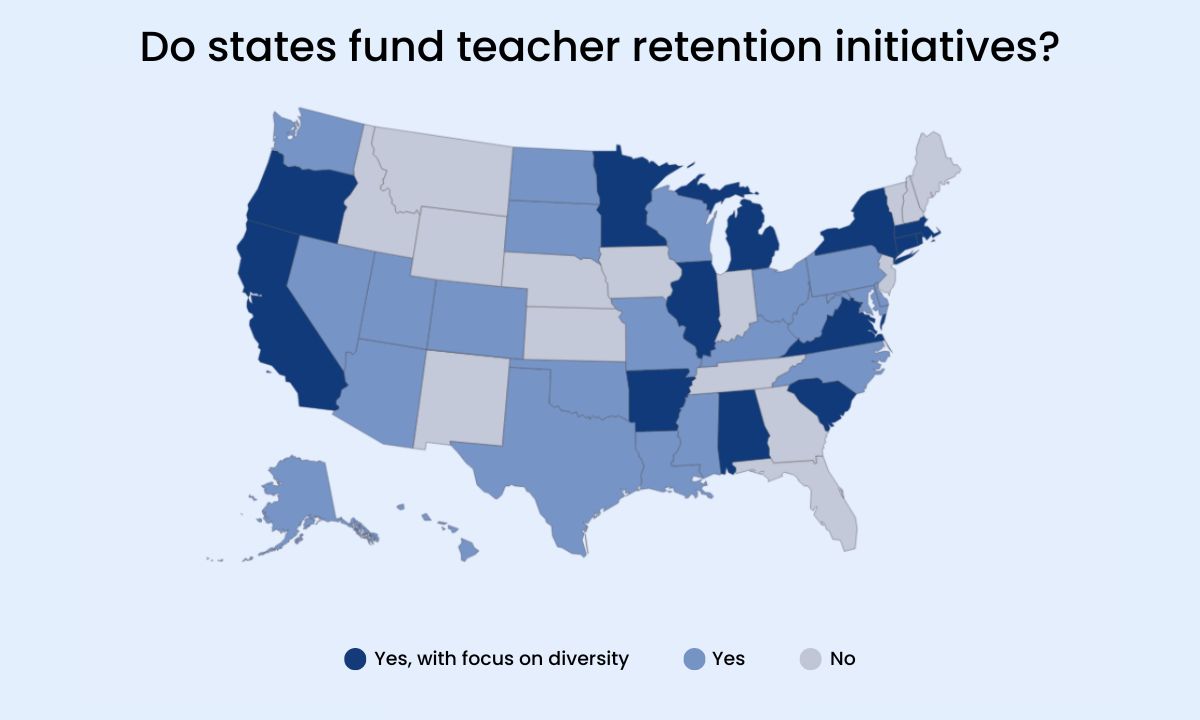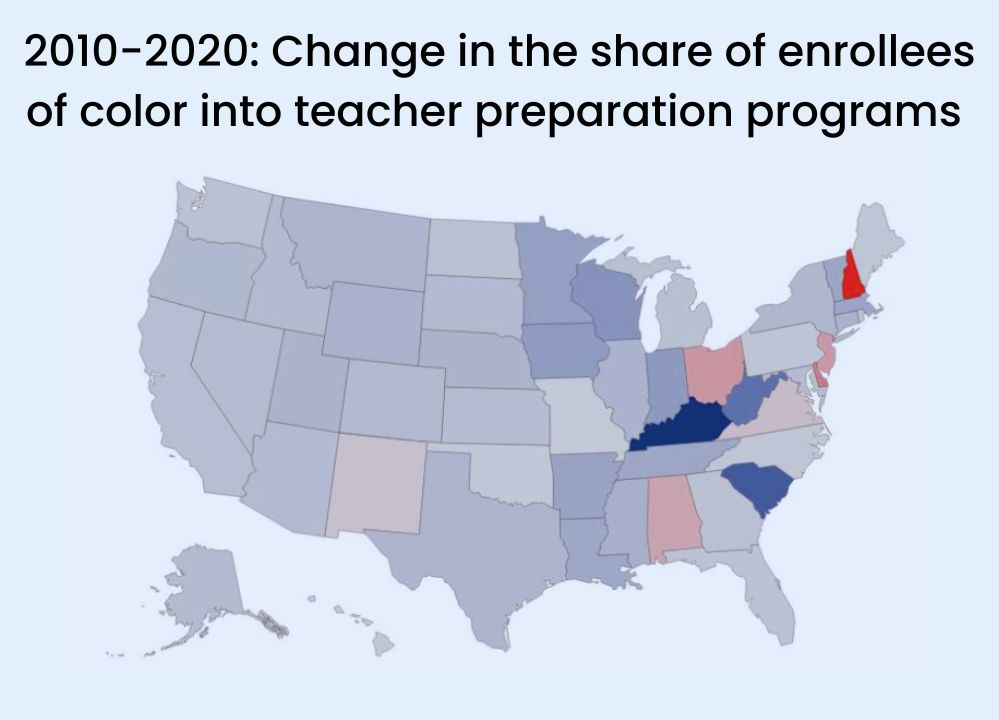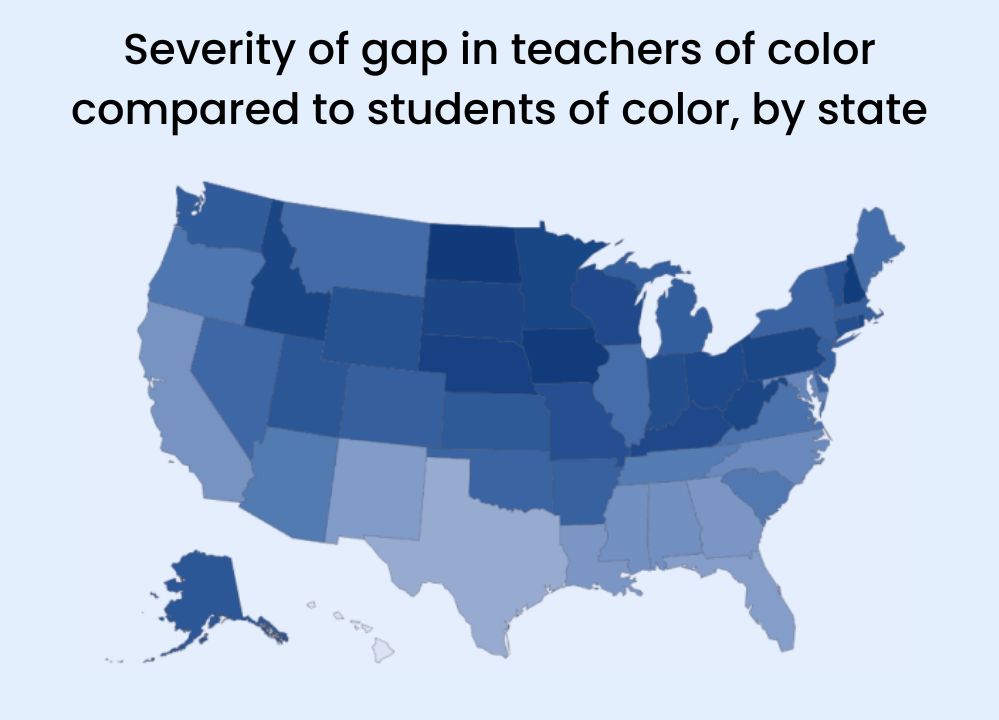‘State of the States’: New Report Highlights Teacher Diversity Strategies
To hire and keep more educators, states should address every stage of the training, recruiting and retention pipeline, says NCTQ.

Get stories like this delivered straight to your inbox. Sign up for The 74 Newsletter
Research consistently shows that having one or more teachers of color has a dramatic, positive impact on students of color, including higher academic achievement, better attendance and higher rates of high school graduation and college-going. Yet just 20% of teachers are people of color, compared with 50% of public school students.
With an eye toward changing this, the National Council on Teacher Quality, a nonprofit focused on educator quality, has issued “State of the States 2023,” a report detailing the size of the gaps throughout the country and summarizing promising policies. To diversify the ranks of their teachers, the group’s researchers say, states need to attend to every aspect of training and hiring people from underrepresented communities and making the schools where they work more hospitable.
“Data suggests there is a profoundly leaky pipeline of potential teachers of color into the classroom, with candidates leaving the pipeline at every point from high school through teacher preparation,” the report states. “States can slow the leak by shoring up the pipeline at each point where potential teachers of color slip through.”
Here are five top takeaways from the report:
States should set explicit diversification goals and collect data tracking progress toward meeting those targets.
An appropriate goal might be increasing the diversity of the teacher workforce to match the population of students of color. Officials should collect and publish both district- and school-level data outlining progress — something only a handful of states currently do.
In the same spirit, states should use data to evaluate all their efforts to diversify the teacher workforce, with an eye toward identifying — and investing in — the most effective strategies. Nearly every state has created programs to encourage high school students to consider teaching careers, for example, yet little evidence has been published showing how well this strategy works.

Unless education officials fund efforts to increase racial equity at every stage of teacher training, recruitment and retention, they are unlikely to reach their goals, the researchers warn.
Track how well early career teachers are faring using retention data disaggregated by race and ethnicity at the individual school level.
This should include surveying educators in their first five years on the job — a time when many struggle and leave — on working conditions and satisfaction. Currently, just one state, Delaware, collects information on how many new teachers of color stay at each school.
Surveys of working conditions are also important sources of information on teachers’ success and satisfaction. Understanding the factors that cause new educators to quit is important if school leaders are to address their challenges.
The report also recommends improving school climate and leadership and training human resources staff to respond to concerns raised by educators of color.

Pay teachers more to work in hard-to-staff schools.
Teachers of color are more likely than their white counterparts to work in schools that struggle to attract and retain top talent, and are more likely to serve large numbers of students who look like them and would benefit from more diverse staff. The NCTQ researchers pointed to a RAND Corp. study that found that for every $1,000 increase in pay for teachers working in these schools, attrition fell by 6%.
“While not specific to teachers of color, this policy would have an immediate impact on those educators (who are more likely to be people of color) already working in schools with the highest need,” the report notes.
Change layoff policies so teachers of color are no longer disproportionately impacted.
In many places, teachers of color are much more likely to have probationary status or to be at the bottom of seniority rolls, making them much more vulnerable to losing their jobs when budgets must be cut. States should make sure that decisions about educator layoffs incorporate multiple factors, rather than using seniority as the top or only criterion.
According to the report, research suggests that making decisions about layoff priorities locally, using information about a community’s needs, can be helpful.
Teachers of color should be at the policymaking table.
Educators of color have different ideas about what it will take to diversify teaching than white teachers and education experts do. When asked about barriers to diversification, non-white teachers named better pay, loan forgiveness and supportive administrators, for example, and were less likely to say they want “Grow Your Own” programs where schools and districts seek to train future staff.
Disclosure: Charles & Lynn Schusterman Family Philanthropies, The Joyce Foundation and Walton Family Foundation provide funding to the National Council on Teacher Quality and The 74.
Get stories like these delivered straight to your inbox. Sign up for The 74 Newsletter

;)
